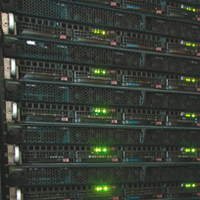News
For a billion years after the Big Bang, the universe experienced its “dark ages,” a time when space was a vast sea of atomic hydrogen. That period ended with the birth of stars, galaxies, and black holes, ultimately leading to the brilliant skies above us at night.
“The basic building blocks of our universe formed during the dark ages,” said Lincoln Greenhill, a senior research fellow and lecturer on astronomy at the Harvard-Smithsonian Center for Astrophysics (CfA). “But our understanding of this incredibly important time is in fact based on very little hard data.”Greenhill, together with U.S., Australian, and Indian colleagues, is planning to map the dark ages in search of clues about this time. They’re building a revolutionary radio telescope — 8,000 antennas spread across 1.5 kilometers of desert — deep in the Australian outback. The antennas will generate so much data, however, that without a new kind of computing, running at faster speeds while requiring lower power, the project would be impossible.
Cutting-edge science delivered direct to your inbox.
Join the Harvard SEAS mailing list.
